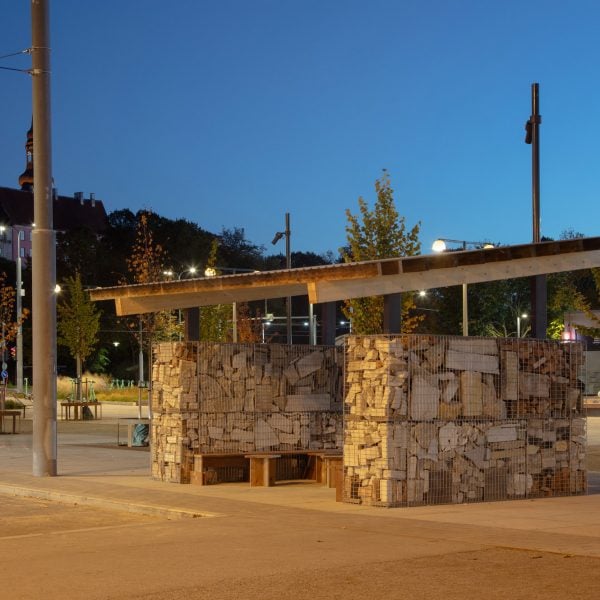Brussels-based architecture duo Brasebin-Terrisse have erected a bus shelter made using waste materials as part of this year’s Tallinn Architecture Biennale.
Titled No Time to Waste, the pavilion at the Balti Jaam transit hub was mostly made from offcuts sourced from suppliers around Tallinn and includes discarded concrete paving slabs from a construction site, chunks of stone from a local manufacturer and pieces of brick from a waste-management company.
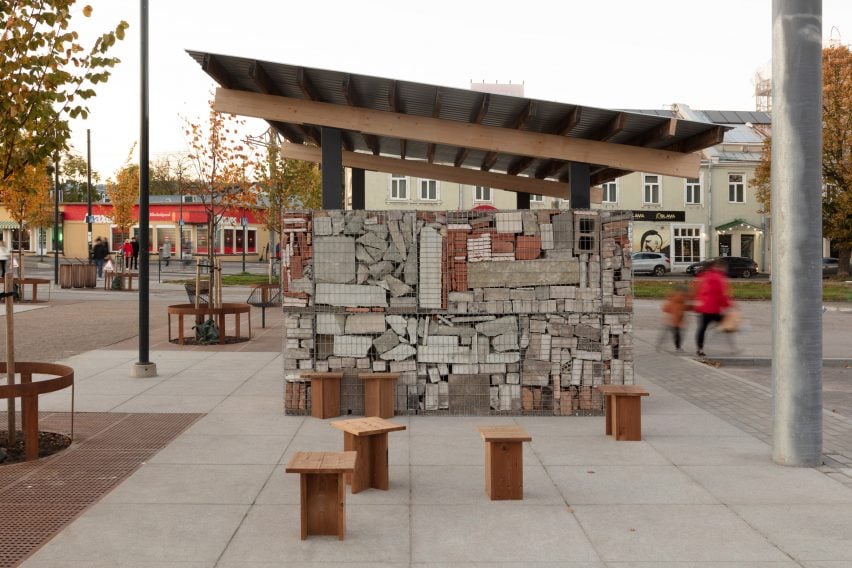
Brasebin-Terrisse, which is made up of Matthieu Brasebin and Elisabeth Terrisse de Botton, conceived the project as a reversal of the conventional architecture process – one where the design is determined by the materials available, rather than the other way around.
As a result of being dependent on what waste materials could be sourced locally, the architects were not able to confirm how the finished shelter would look during the initial design phases.
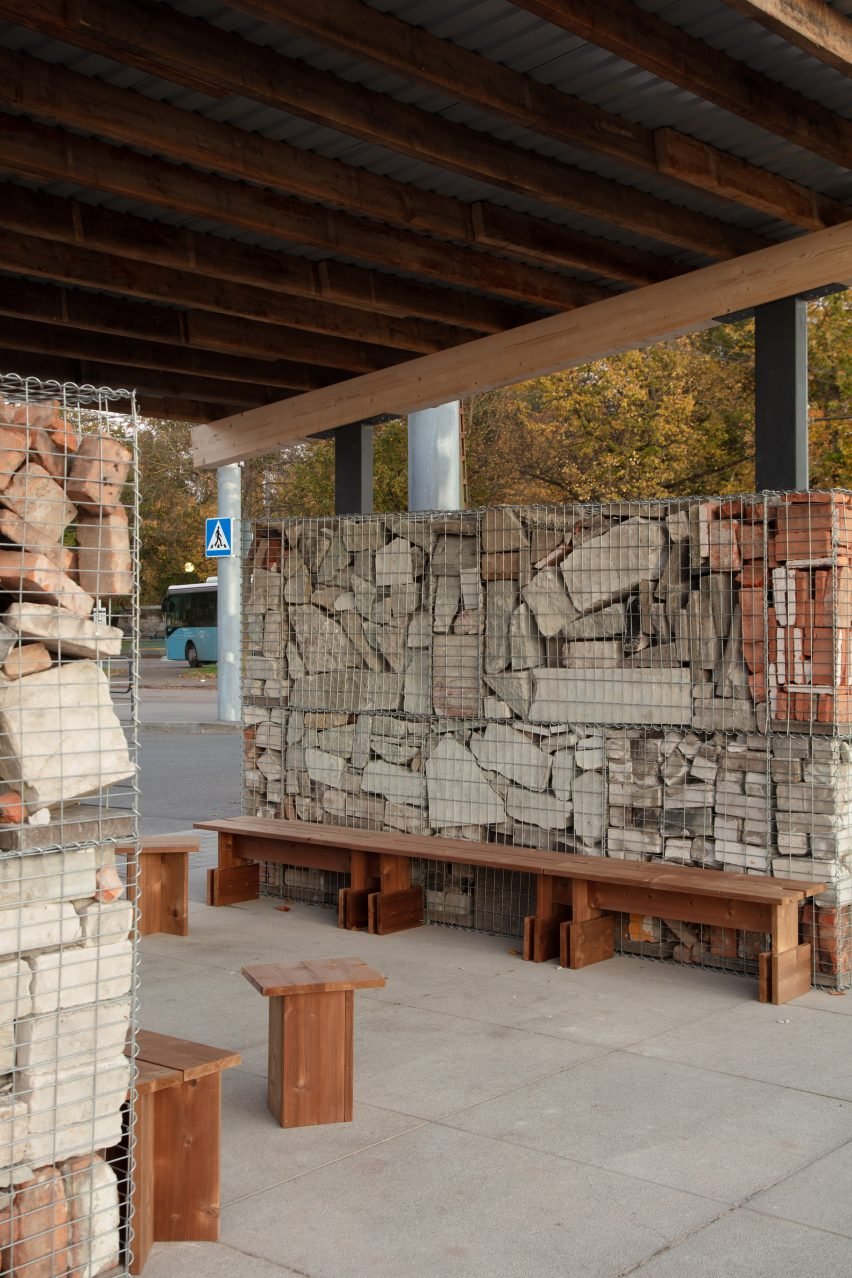
“Instead of proposing a finite design with speculated materials, we defined a set of principles that could be adapted afterward based on the available resources,” Brasebin and Terrisse de Botton told Dezeen.
“Actions like filling – with building waste, assembling – network of primary and secondary beams, or cladding – roofing material, became more important in the design than the resource itself,” they continued.
“In the end, the pavilion turned out to be very close to the image we projected in the competition, which showcased one of many possible scenarios.”
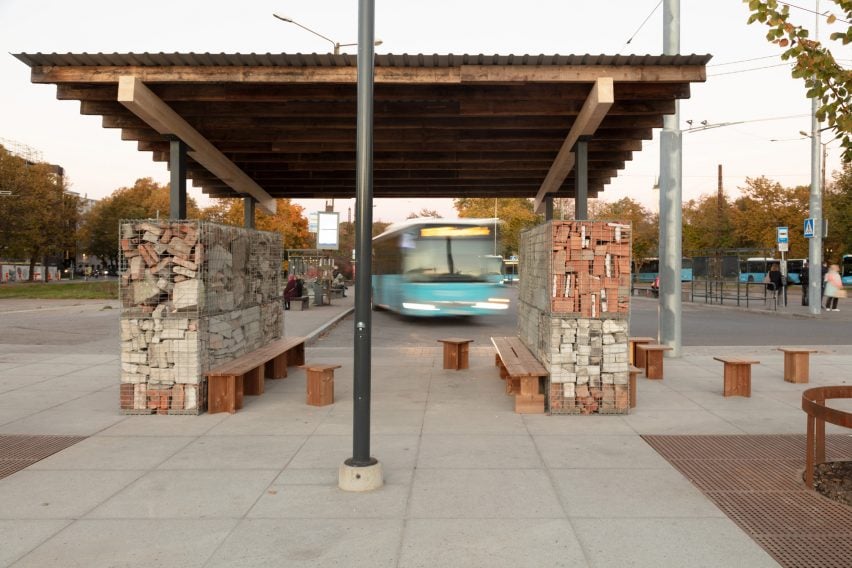
The unusual nature of the project meant that it faced challenges in getting final building approval from Tallinn’s municipal authority, compounded by the fact that the site is publicly owned.
After long delays, permission was eventually granted only the day before the biennale officially opened on 9 October, with construction starting immediately and completing towards the end of last week.
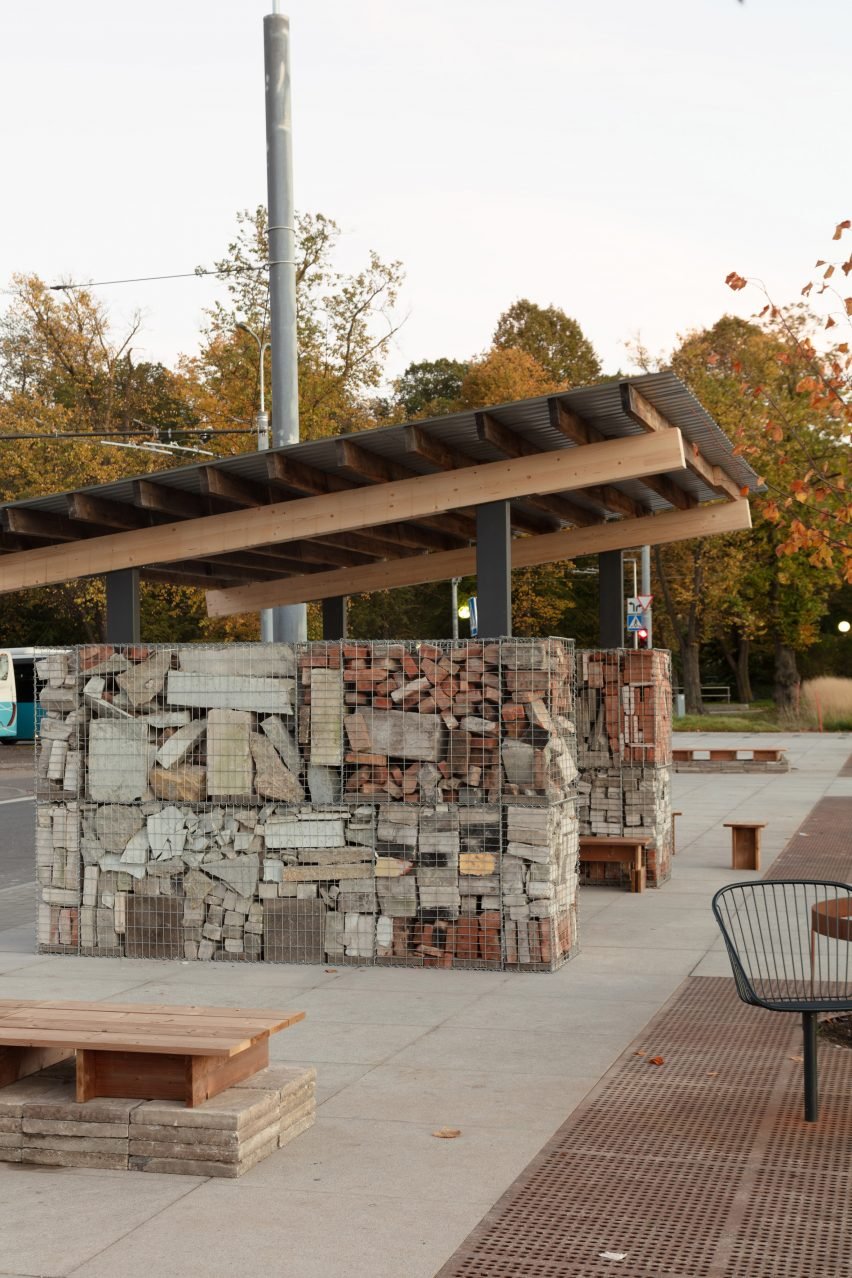
The pavilion is composed of two walls made from steel gabion caging filled with rubble, with a single-pitch roof made from corrugated metal sheeting laid across wooden beams held up by steel posts. Simple wooden seating is stationed under the roof and adjacent to the shelter.
Only the gabion cages, screws and two glulam beams were newly purchased for the project, with the roof cladding, steel posts and secondary timber beams sourced second-hand.
Per the competition instructions, Brasebin-Terrisse’s design is for a 45-metre-long shelter. What has been built is a six-metre prototype section that will remain in place for a minimum of two years. If deemed a success, the full-length shelter may be constructed.
The architects hope that the pavilion will be appropriated by the people of Tallinn for a range of uses beyond a bus shelter – as a pop-up bar during events in the plaza on which it stands, for example.
If built, the full design would extend this idea, taking the form of a line of open-sided “rooms” that could be adapted to different purposes.
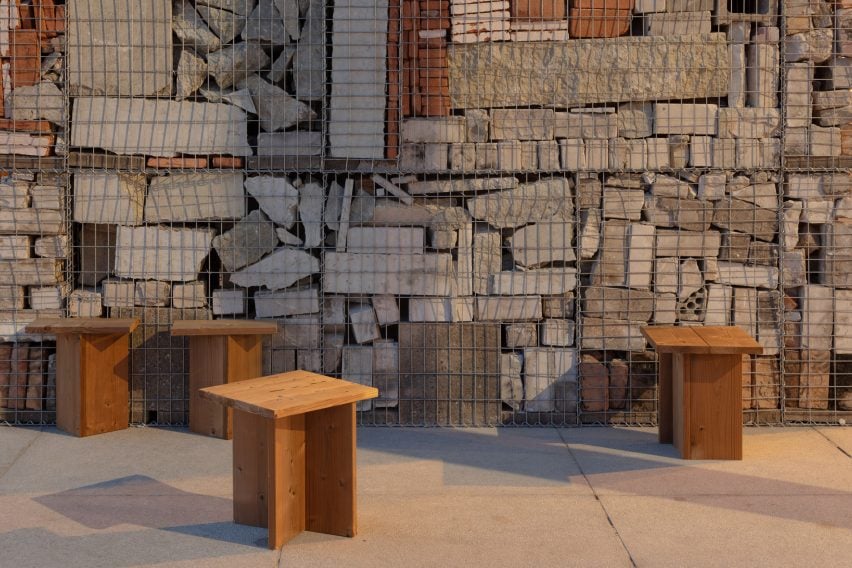
“The pavilion is an experimental fragment, a prototype, of a future 45 metre-long canopy, providing a waiting area for bus stops on Balti Jaam’s square,” said the architects.
“We hope it will draw curiosity and awareness from the inhabitants, shifting perception about building waste and its aesthetics and nourishing ongoing debates about re-use.”
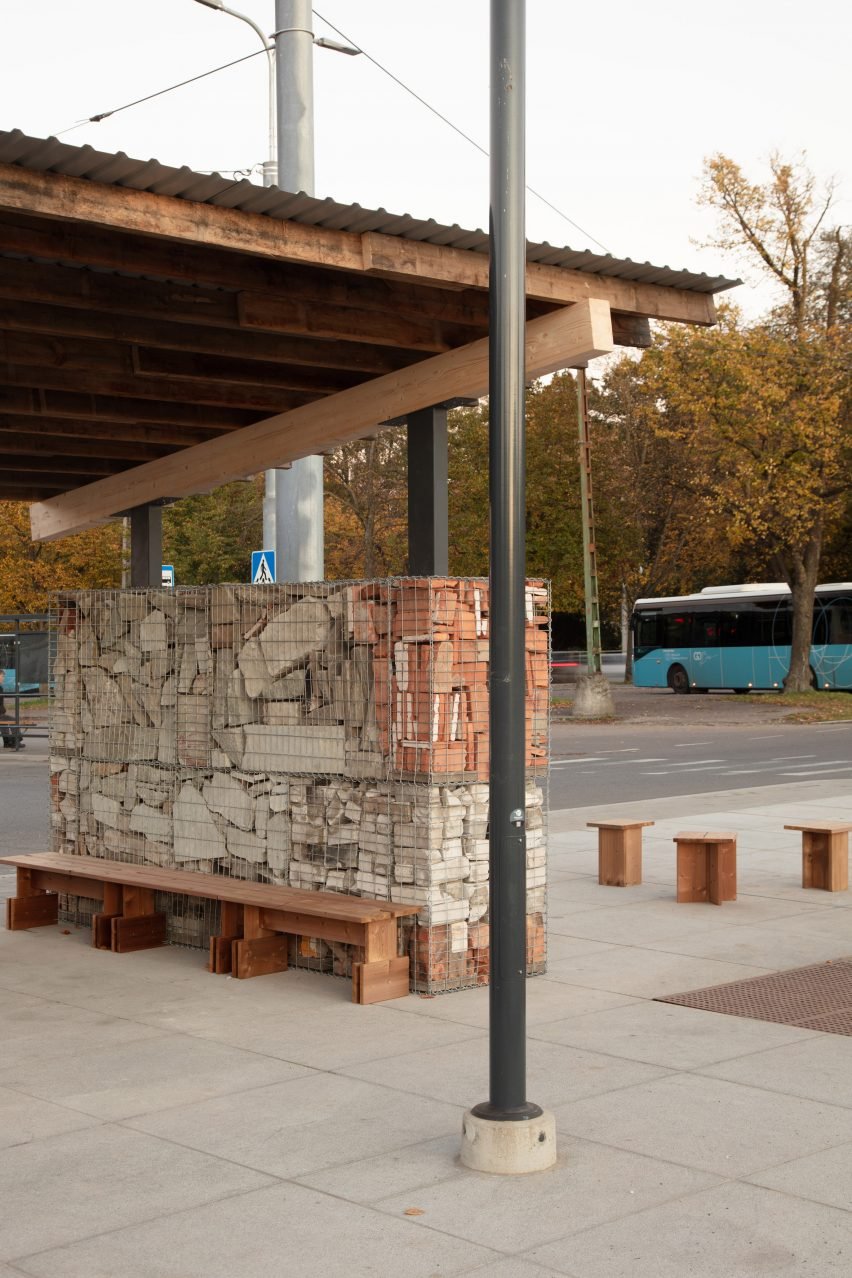
No Time to Waste was selected as the winning design by a team of judges led by the chief curator of this year’s biennale, Anhelina L Starkova.
In an interview with Dezeen, Starkova explained that she felt Brasebin-Terrisse’s proposition fitted best with the festival’s overarching theme of Resources for a Future, which looks at innovative approaches to reusing existing building resources.
“This was the only project who said that we have an open end – we do not propose [a] form of the installation, we prepare that we come to Tallinn, we test a local situation and after we will develop a form given when doing the work on it,” she said.
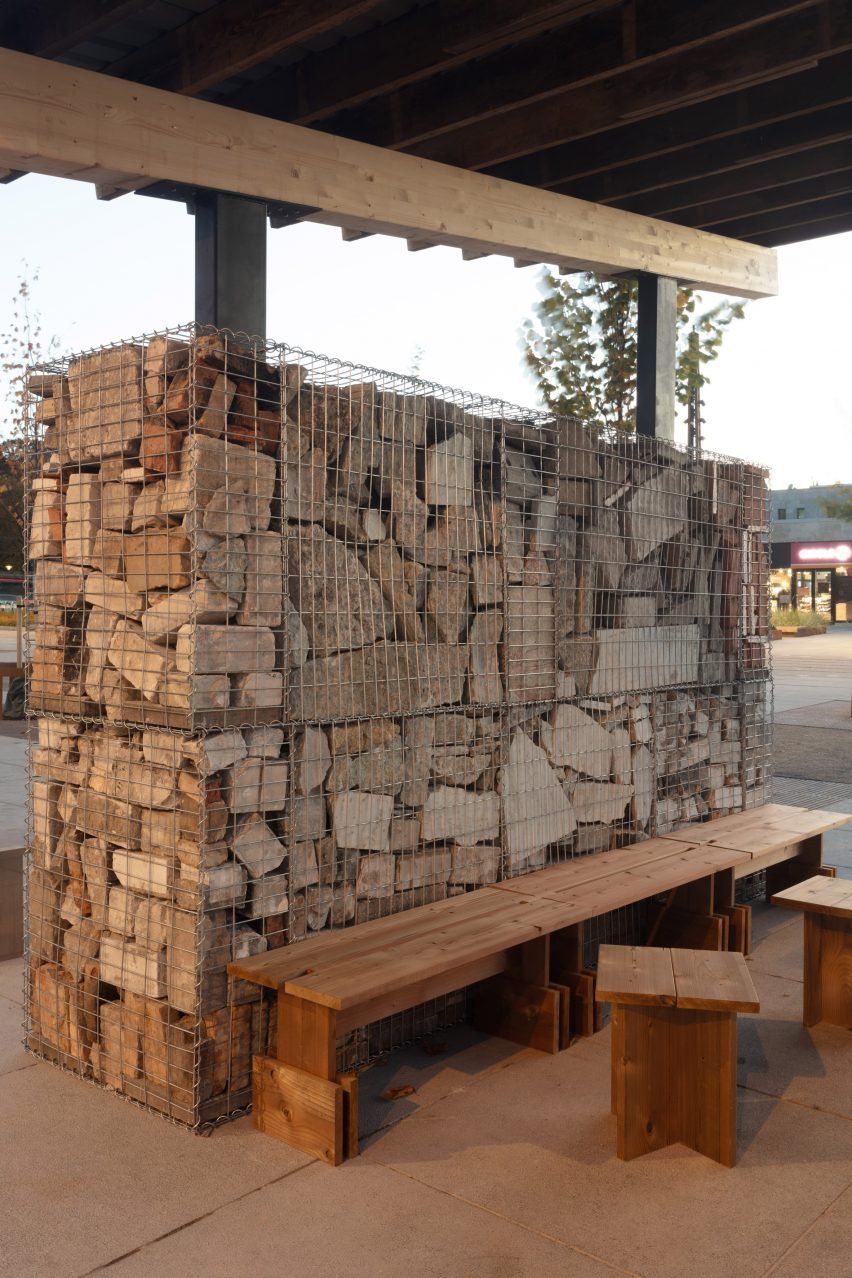
Proposals from the competition finalists are being exhibited at the Museum of Estonian Architecture in Tallinn for the remainder of the biennale, next to the main Resources for a Future exhibition.
Entrants to the competition were tasked with designing a sturdy piece of public infrastructure that would repurpose materials, including from local timber manufacturer Thermory, a sponsor of this year’s biennale.
Tallinn Architecture Biennale is in its seventh edition this year, having first been held in 2011.
Previous pavilions at the biennale have included a non-fungible-token-funded structure by UK studio Iheartblob and a project that combined traditional wood-bending methods with digital modelling.
The pavilion photography is by Gregor Jürna.
Tallinn Architecture Biennale 2024 opened on 9 October 2024 and will take place in various locations across Tallinn, Estonia until 1 December 2024. See Dezeen Events Guide for an up-to-date list of architecture and design events taking place around the world.

